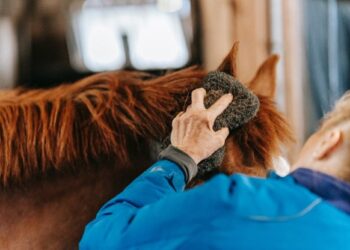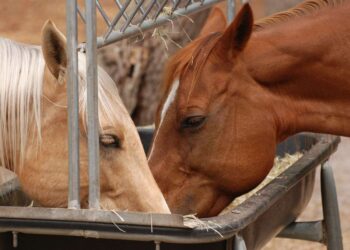Unfortunately, navicular disease is common in horses. It is not a disease with a specific cause, but a disease with a specific problem: chronic lameness. The diagnosis can be made by means of X-rays. There are many different types of treatments possible, surgery, medicines, and other attachments. Which treatment works differs per horse.
What is Hoof Pulley
The scientific name of navicular disease is podotrochleosis. Navicular disease is not a disease with a specific cause, but a collective term for several disorders that all have the same effect. This is chronic lameness due to pain in the navicular region of one or more legs.
Reading Suggestions; 500 Horse Names For Male and Female Horse Names
The causes of navicular disease
In some cases, the navicular disease develops after the horse has rested. The circulation of a hoof only functions properly when a horse has movement. Horses that are almost alone in the stable are therefore more likely to have a navicular infection. Incorrect trimming of the horse can also cause navicular disease.
Incorrect trimming can cause a wrong hoof position or shape. Intense training on a floor that does not bounce well with the movement can also cause navicular disease. This can be a problem, especially when jumping because the horses end up very vertically on their front hooves and they have to absorb the entire blow.
The symptoms and diagnosis of navicular disease.
The first step in diagnosing the navicular disease is to show that the pain that causes the horse to cripple is in the back half of the foot. This can be done, for example, by temporarily switching off the nerves in this part of the leg by means of an injection. Next, an X-ray of the lower part of your
horse’s leg will have to be taken. In most cases, these photos show a deviation in the radius bone. Vets today use a method where they inject a local anesthetic directly into the bursa of the navicular joint to clear up any doubts. They use the X-rays to make sure the injection hits exactly the right spot.
This method ensures that the diagnosis is confirmed, even in cases where no change in bone structure is visible. A navicular disease is actually a form of joint osteoarthritis. This form of osteoarthritis is additionally complicated by the pressure of the deep flexor tendon on the back of the radius bone and by specific blood circulation problems in the bone.
Therapy
The basis of the treatment of navicular disease consists of proper balancing of the hooves. Especially a hoof with a low tone and short heels needs to be corrected well. A horse will almost always receive a therapeutic attachment. The goal is to take the weight off the back of the lower foot, which is where the radius bone is located.
The horse will first start to walk irregularly instead of lame, after four to six months the horse will be completely healed.
It is recommended to give your horse full pasture so that he can get enough exercise. The drug called isoxsuprine can help improve blood flow in the navicular area, taking it doesn’t mean it doesn’t need to improve hoof balance!
In some cases, a surgery that partially removes the ligaments that support the radius bone can help. This operation puts the leg in a slightly less painful position. In some cases, the navicular disease cannot be treated and the horse will have to be put to sleep because he is in too much pain.
Over the years there has always been a lot of discussion among horse experts whether the navicular disease could be hereditary. It is believed that navicular disease in itself can never be hereditary because there are far too many elements involved. However,
the shape of the hoof, the construction of the leg, and many other things that are hereditary can ensure that a horse suffers from the navicular disease more quickly.









